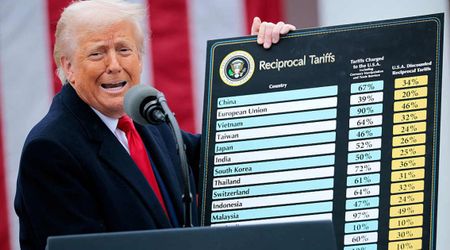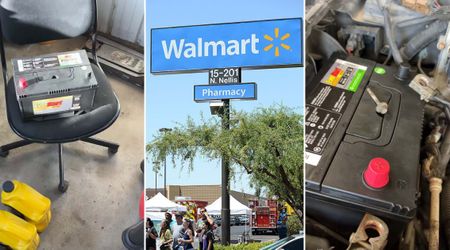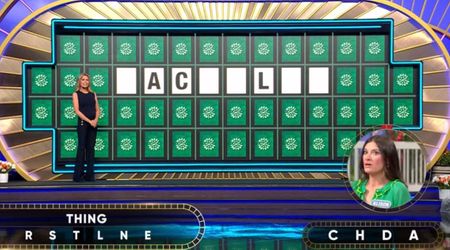As Federal Reserve Keeps Interest Rates Steady, Here’s How You Can Maximize Your Savings

The Federal Reserve maintained a high primary interest rate for 23 years. At their most recent meeting, they simply decided to keep everything the same, per CBS News. They have done this six times now. This has not gone down well with everyone, particularly with investors, homebuyers, and credit card debt holders. This is because it has an impact on mortgage and credit card interest rates. However, there is a hint that the Federal Reserve won't cut rates until the summer. As a result, you have a little longer to take advantage of your savings before having to worry about interest rates rising.

Savings strategies that outpace inflation are still available, such as high-yield accounts. However, your money won't increase significantly if you keep it in an ordinary account. There are better choices available, but they might not last long. So, if it fits your goals, act fast. Consider these options for growing and securing your savings.
High-yield online savings accounts
According to Bankrate, the average interest rate on savings accounts at conventional banks as of March 13 was a pitiful 0.52%. Major physical banks such as Bank of America and JPMorgan Chase add to this low average by providing interest rates as low as 0.01%. However, some FDIC-insured online banks continue to provide substantially higher rates on their high-yield savings accounts, which range from 4.35% to 5.35%. Since they offer convenient access to your money together with strong returns, these online accounts are frequently the greatest option for storing your emergency funds.
A difference in interest rates can make a substantial impact. For instance, with a $10,000 deposit in a savings account, a higher 5.35% rate could yield $496 more in interest over a year, assuming monthly compounding. Despite recent dips in high-yield savings account rates, experts like Ken Tumin of DepositAccounts.com believe that major declines may not occur until the Federal Reserve lowers interest rates. Interest rates on accounts can change suddenly, and banks may not notify customers about decreases. Therefore, it's crucial to regularly check your monthly statement to stay informed about any interest rate changes.

Certificates of deposits
Investing in money you won't need immediately can be done with certificates of deposit (CDs). Using brokers like Schwab, E*Trade, or Fidelity ensures you access the best CD rates. You can compare CDs from various banks without the hassle of opening multiple accounts. Currently, one-year Certificates of Deposit (CDs) typically provide interest rates of around 1.95%, while some banks offer up to 5.4%. For example, investing $10,000 in a CD with a 5.4% interest rate for a year will yield $540 in interest. It's recommended to maintain the investment for the entire term, but it's possible to withdraw the original deposit early, although there may be penalties associated with such withdrawals.
On March 20, CD rates on Schwab.com varied between 5.2% and 5.51% for terms of three months to three years. Longer-term CDs of four to ten years had rates ranging from 4.40% to 5.15%. For example, investing $10,000 in a one-year CD with a 5.36% APR would result in $536 of interest earned at maturity. Similarly, a two-year CD with a 5.25% rate would yield an additional $1,078, while a five-year CD with a 5.15% rate could accumulate $2,854. To diversify your investment, Tumin suggests spreading it across CDs with durations from one to five years, employing a CD ladder strategy for a balanced approach. You might also find competitive CD rates at your regular bank; for example, Bank of America offers up to 4.75% on a 7-month CD, and Wells Fargo up to 5.01% on 4- and 7-month CDs. However, Tumin advises caution when dealing with large bank CDs. If you don't withdraw your money when the CD matures, the bank might automatically renew it at a lower rate without your consent.
Money market accounts and funds
If you prefer to keep your money with your current bank, consider exploring their money market deposit account. It may offer higher interest rates than traditional savings accounts. While money market accounts are more liquid than Treasury bills or certificates of deposit, they often have higher minimum deposit requirements. However, as Doug Ornstein of TIAA Wealth Management explains, you gain faster access to your funds while still earning potentially higher returns. The difference between money market mutual funds, which make investments in short-term, low-risk debt instruments, and money market accounts must be understood. They are not FDIC-insured, but as of March 19, these funds had an average 7-day yield of 5.14%. On the other hand, your entire account can be covered if you invest in them through a brokerage.

Treasury bills and notes
Another alternative for money you won't need for a while is to invest in U.S. government-backed medium- and short-term Treasury bills and notes. Treasury bills maturing in three and six months paid 5.39% and 5.33% respectively as of March 20. For a $25,000 investment, nine-month and one-year bills offered 5.19% and 5.08%, respectively. The yield on Treasury notes with terms ranging from two to ten years was between 4.29% and 4.72%.
Andy Smith from Edelman Financial Engines suggests that for individuals who would like to take a more hands-off approach, purchasing through a brokerage account or choosing a short-term bond index fund or ETF would be easier. If you need the money in three to five years, you might want to consider a diversified fund made up of highly rated corporate and government bonds. For example, an AAA-rated 18-month corporate bond yielded 4.82%, while the three-year rate was 4.49%. Similarly, three-year AAA-rated municipal bonds had a rate of 3.98%, according to Schwab.com.
Consider speaking with a fee-only fiduciary adviser
Consider speaking with a fee-only fiduciary adviser when selecting the accounts and assets that will best serve your objectives and provide you peace of mind. These advisors provide objective advice because they are not compensated for recommending particular investments. It's critical to remain adaptable so you can readily obtain funds, notwithstanding shifts in your objectives or unforeseen requirements. What would happen, for example, if you unexpectedly needed your down payment sooner or if your parents needed emergency medical attention?
This entails striking a compromise between obtaining large yields and guaranteeing penalty-free, simple access. Put differently, don't focus just on yield. As Doug Ornstein points out, unless you have large amounts of money to invest, there isn't much of a difference between a 5.1% yield and a 5% yield if there are penalties for early withdrawal. Prioritize convenience over a marginal increase in yield.
























